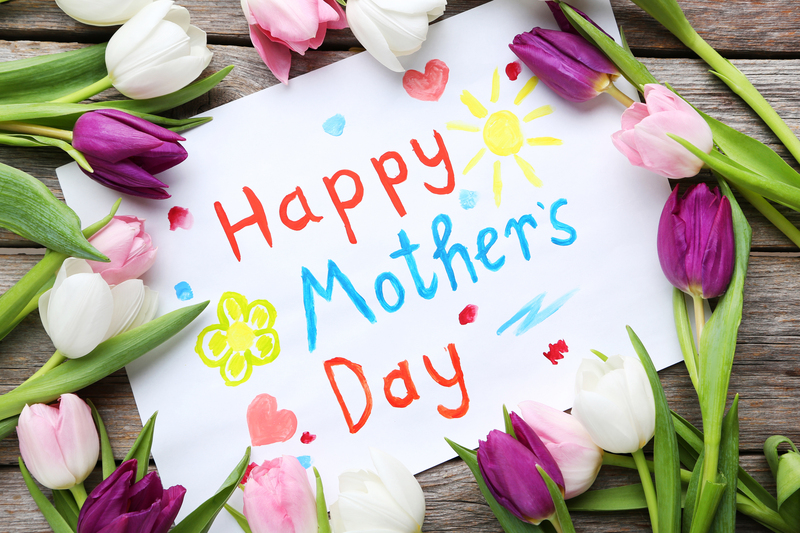Understanding Your Birth Flower: What Insights Does It Provide on You
Posted on 17/08/2025
Understanding Your Birth Flower: What Insights Does It Provide on You?
Every month of the year is associated with a unique blossom, popularly referred to as a birth flower. Like birthstones, these flowers carry symbolic meanings, historical tales, and personal insights. But what does your birth flower reveal about your personality, strengths, and outlook on life? In this in-depth article, we explore the essence of birth flowers, their meanings, and the unique insights your birth flower can provide.
What Are Birth Flowers?
Birth flowers are blooms traditionally linked to each month of the calendar year, much like birthstones. These floral representations are believed to carry special significance and offer a window into the character and destiny of individuals born in that particular month. Throughout history and across various cultures, birth month flowers have been used to convey emotions, mark occasions, and offer blessings to newborns and loved ones.
The idea of associating certain flowers with months dates back to ancient Rome, where flowers played a significant role in mythology, celebrations, and symbolism. Over time, Victorian-era floriography (the language of flowers) popularized the meanings behind each blossom, making the tradition of gifting monthly birth flowers an enduring one.

Why Is Learning About Your Birth Flower Important?
Understanding your birth flower does more than add a decorative touch to your birthday celebrations. Birth flowers provide insights into your personality, life philosophy, and even your relationships. Just like zodiac signs or numerology, the lore and symbolism attached to birth month flowers can help you reflect, grow, and connect with others in meaningful ways.
- Personal reflection: Knowing your birth flower's meaning can help you discover hidden strengths or personality traits.
- Gifting inspiration: Birth flowers are a thoughtful alternative to birthstones, suitable for personalized gifts.
- Cultural connection: Explore traditions and myths linked to your flower for deeper cultural understanding.
- Symbolic guidance: Birth flowers can guide you in various life areas through their symbolic language.
What Does Each Birth Flower Mean?
Each month of the year boasts one or more unique flowers with distinct symbolism. Let's take a closer look at what insights each birth flower offers:
January: Carnation and Snowdrop
- Carnation: Symbolizing devotion, love, and distinction, carnations embody loyalty and steadfastness. January-born individuals tend to possess inner strength, resilience, and strong ties to family and friends.
- Snowdrop: Representing hope and renewal, snowdrops highlight a pure, optimistic, and gentle personality. Those associated with snowdrops often inspire trust and renewal in others.
February: Violet and Primrose
- Violet: Known for faithfulness and modesty, the violet signifies wisdom and humility. If the violet is your birth flower, you probably have a calm demeanor and a nurturing spirit.
- Primrose: A symbol of youth, young love, and new beginnings. Primrose people are often youthful at heart and embrace change.
March: Daffodil
- Daffodil: Associated with rebirth and new beginnings, daffodils are cheerful and optimistic. March-born individuals radiate positivity and are harbingers of hope and inspiration.
April: Daisy and Sweet Pea
- Daisy: Daisies symbolize purity, innocence, and loyalty. If your birth flower is the daisy, you likely have an honest, trustworthy, and cheerful nature.
- Sweet Pea: Associated with bliss and delicate pleasure, sweet peas hint at graciousness and appreciation for beauty.
May: Lily of the Valley and Hawthorn
- Lily of the Valley: Embodying sweetness and humility, it reflects a gentle and kind-hearted soul.
- Hawthorn: This flower is linked to hope and happiness, highlighting optimistic, warm-hearted individuals.
June: Rose and Honeysuckle
- Rose: Universally recognized for love and beauty, June-born people are passionate, creative, and compassionate.
- Honeysuckle: Symbolizing bonds of love, honeysuckle personalities are loyal and affectionate.
July: Larkspur and Water Lily
- Larkspur: Represents positivity and open-heartedness, indicating a jovial and generous spirit.
- Water Lily: Signifies purity and enlightenment, ideal for those with introspective and wise nature.
August: Gladiolus and Poppy
- Gladiolus: Denotes strength of character and moral integrity, suggesting resilience and self-belief.
- Poppy: Represents remembrance and imagination, indicating a creative and empathic individual.
September: Aster and Morning Glory
- Aster: Stands for wisdom and valor, reflecting sensitivity and a quest for knowledge.
- Morning Glory: Symbolizes affection and mortality, linking to expressive and thoughtful personalities.
October: Marigold and Cosmos
- Marigold: Associated with warmth, creativity, and passion, highlighting energetic and driven individuals.
- Cosmos: Symbolizes balance and peace, suggesting harmonious and sociable natures.
November: Chrysanthemum
- Chrysanthemum: Denotes loyalty and joy, revealing cheerful, optimistic, and steadfast individuals.
December: Narcissus and Holly
- Narcissus: Linked to faithfulness and respect, ideal for those with dignity and a strong sense of self.
- Holly: Symbolizes protection and foresight, highlighting resilient and caring personalities.
How to Discover Deeper Insights from Your Birth Flower
Personal Reflection Through Symbolism
Interpreting your birth flower isn't just about reading a description; it's an invitation to self-reflect. Ask yourself:
- Do the traits of my birth flower resonate with my life experiences?
- Are there hidden strengths I haven't acknowledged?
- Can connecting with my birth flower inspire personal growth?
Using Your Birth Flower in Daily Life
Integrate your birth flower into your surroundings for inspiration and mindfulness:
- Decor: Grow or display your month's flower at home or office for a daily reminder of your qualities.
- Journaling: Write about experiences linked to your flower's symbolism and how they shape your path.
- Gifting: Share your knowledge with friends by gifting bouquets tailored to birth months for a personal touch.
- Wellness: Use flower essences or scents from your birth flower to enhance relaxation and emotional balance.
Birth Flowers Around the World
The concept of assigning flowers to birth months isn't universal--different cultures have their unique takes. For example:
- Japan: The "hanakotoba" system assigns deep connotations to flowers, and their meanings can differ from Western associations.
- Victorian England: Floriography, the "language of flowers," created a culture where flowers sent coded messages.
- Modern Western Tradition: The standardized list of birth flowers mainly originates from English sources and has been widely adopted.
Exploring these differences can help you appreciate how birth flower meanings evolve depending on heritage and tradition.
The Connection Between Birth Flowers and Zodiac Signs
For many, birth flowers and zodiac signs go hand-in-hand. Both are tools for self-understanding and guidance. Often, the traits of your birth flower will complement those of your star sign. For example, Arians (March-April) are known for energy and new beginnings--just like the daffodil.
Combining your zodiac sign with the meaning of your birth flower can offer a richer, fuller picture of your inner world. Try researching or journaling about both to see patterns or insights that resonate.

Frequently Asked Questions About Birth Flowers
1. Can I have more than one birth flower?
Yes! Some months have two or even three birth flowers associated with them. Choose the one whose symbolism resonates most deeply--or embrace both for a fuller understanding.
2. Are birth flower meanings the same everywhere?
Meanings can shift depending on culture, history, and even family tradition. While there are common motifs, interpreting your birth flower is a personal journey.
3. How do I find my true birth flower?
Refer to the month of your birth and check traditional or regional lists. Modern interpretations sometimes suggest alternatives, so it's worth exploring different sources.
4. What if I don't relate to my birth flower?
That's okay! Symbolism is flexible. Use your birth flower as a prompt for reflection--maybe its traits point to qualities you want to cultivate or admire in others.
Conclusion: Unlocking Personal Insights With Your Birth Flower
In the world of nature's symbols, understanding your birth flower offers a captivating, meaningful way to explore your identity. Whether you're decorating your home, celebrating loved ones, or simply seeking a window into your character, the meanings and stories behind your birth flower can enhance your self-knowledge and add beauty to life's journey.
From resilience to love, hope to harmony--each birth flower tells a story that may mirror your own. Use this ancient tradition not just as a curiosity, but as a tool for growth, connection, and joyful self-expression.
Ready to discover what your birth flower says about you? Explore its meaning, embrace its symbolism, and let its wisdom inspire your path.
Latest Posts
Understanding Your Birth Flower: What Insights Does It Provide on You
10 Office Plants That Won't Take Up Much of Your Time
Hydrangea Care: Growing Gorgeous Blossoms
Unleash the Full Potential of Your Orchids with Our Care Guide





